Studies suggest that our fruit and vegetables are losing nutrients. Bárbara Pinho examines the evidence and looks at the implications of a ‘nutrient collapse’
Viewed from above, the agricultural fields around Rothamsted’s estate look like any other farm in the surrounding countryside of Hertfordshire, England. But despite the seemingly ordinary landscape, these fields tell the story of a great scientific experiment – the longest running scientific experiment in the world.
In 1843, John Bennet Lawes, the owner of the estate at the time, began a series of long-term field trials on the land, which became known as the Broadbalk long term experiments. His aim was to test the effects of different mineral fertilisers and organic manures on the yield and quality of major British crops such as wheat and barley. Lawes and his colleagues kept samples of crops and soils, and successive generations of scientists at Rothamsted have continued to add to the collection.
‘The timescale that we’ve got at Rothamsted is unique, because we have an archive of samples that goes back 180 years. 180 years of samples of soil, of crops, of manures and fertiliser,’ says Steve McGrath, principal scientist at Rothamsted Research.
The Rothamsted Sample Archive now holds more than 300,000 samples. These samples are a window into how farmers grew food in the past. Today, scientists use them in a variety of ways, including comparing the nutrient content of today’s fruit and vegetables with those of the past. And what they’re seeing is a bit of a puzzle.
Is it really a nutrient collapse?
When we think about the food we ate when we were younger, we might be inclined to say that it was tastier and healthier than what we eat today. And while we may be saying this out of a nostalgic tendency, researchers have been looking for a more scientific answer. In several papers, researchers have used food tables – country-by-country compendia of historical information on the mineral composition of foods – to report an apparent decline in micronutrients such as iron, vitamins and zinc in fruit and vegetables over time.
One study on this subject dates back to 1997, when Anne-Marie Mayer, a nutrition consultant in the UK, looked at the composition of the UK government’s food tables. She compared the mineral content of 20 fruits and 20 vegetables reported in the 1930s to those in the 1980s and found that the 1980s batch had lower levels of magnesium, copper and other micronutrients. In 2004, a team in the US carried out a similar analysis, comparing the nutrients in 43 raw vegetables commonly grown in home gardens in 1950 and 1999. They found an apparent decline in six nutrients (protein, calcium, phosphorus, iron, riboflavin and vitamin C) in the later batch.
However, while both papers show a clear decline over time, the authors of the latter explicitly state in the conclusion that their paper can’t confirm with certainty whether there is a real decline in nutrients in staple foods. This is because the data they used, taken from food tables, struggles to provide a clear answer.
The trends were clearly there, so I published it because I thought it was in the public interest
‘You have to question that sort of data, because it’s not very controlled,’ says McGrath. ‘It’s vegetables coming from anywhere. And probably any country, any climate, any soil type, any cropping system that you can think of.’
Others have looked at the question of whether data from food tables should be compared in this way. In 2017, Robin Marles, then a senior scientific advisor at Health Canada, published a review discussing the apparent historical decline in nutrients. In it, he mentions that the foods in the tables can differ from each other due to several variables: crop varieties, degrees of ripeness, sample sizes and others. He therefore concludes that these historical comparisons are not robust because the data in the tables represent brief snapshots, not the whole picture.
‘From an experimental scientist point of view, it’s not very good evidence, because there are lots of things that can happen,’ adds McGrath.
For these reasons, the documentation on the UK food tables clearly states that the tables should not be used for historical comparisons. Mayer is aware of this and understands that the data is far from ideal, but she still finds it useful to look at. ‘There was something murky about the system. [Publishers of food tables data] were picking data from one study for one nutrient and another study for another nutrient and putting it together like that. But the trends were clearly there. So, I published that just because I thought it was in the public interest,’ she says.
I find it difficult to compare papers where the methods, the samples and the context are quite different
In 2022, Mayer published another study comparing food in the UK with tables’ data, this time with three data points: 1940, 1991 and 2019. Her findings suggest an astonishing decline in nutrients since 1940, with the biggest overall reductions in sodium, iron, copper and magnesium. ‘The government still says you’re not supposed to compare this data because so much has changed in the food system. To me, that was the reason to look at it,’ she explains. ‘I’m first and foremost a nutritionist. I wanted to know “Has consumed food changed its value?”’
But nutritionist Helena Trigueiro, who isn’t involved in these studies, is more sceptical. ‘As a nutritionist, obviously, it’s interesting to see the different studies and the different techniques they use. But I find it difficult to compare some papers where the methods are quite different, the samples are quite different, and the context is quite different.’
It’s not just that food samples vary within these tables, the methods used in the laboratory to analyse food samples have also changed. If recent measurements show a decrease in certain nutrients compared to older measurements, that isn’t necessarily an indicator of changes in the food itself. ‘We didn’t have atomic absorption in our labs until about 1970. And then we got ICP (inductively coupled plasma), for example, in 1990. So, in the last 30 years, we’re getting really good detection limits. Before that, it was really almost the Wild West,’ adds McGrath.
As a result, the conclusions from these studies tend to be controversial, and not all researchers agree that we’re seeing a nutritional collapse based on this type of research. But just because comparing historical data may not be the ideal strategy for assessing changes in nutrient levels, it doesn’t mean there are no other strategies. Which brings us back to Hertfordshire.
180 years of evidence on wheat
Rothamsted’s long-term trials don’t cover fruit and vegetables like the food tables. They cover British staples such as wheat, which makes up a large part of what Brits eat every day. Wheat flour alone is in about a third of all food products on supermarket shelves and provides 20% of the energy and protein consumed by the UK population. ‘It’s staple crops that we should be looking at because they’re providing most of the dietary intake,’ adds McGrath.
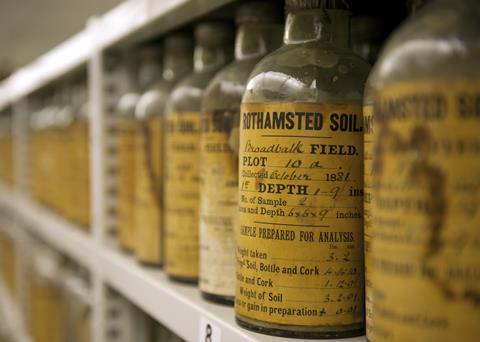
In a 2008 study co-authored by McGrath, scientists looked at changes in the yield and nutritional quality of wheat grains over 160 years. They found that between 1845 and 1967, grain mineral concentrations were stable in most plots. But after 1968, levels of zinc, copper and magnesium began to decline.
In the same study, scientists also compared soil samples from 1865 to 2000. Their results show that micronutrients either remained stable or increased over the course of the study. The increase in some minerals can be attributed to the use of inorganic fertilisers. ‘It shows that it’s not that the soils are decreasing, for example, in zinc, copper or other nutrients,’ McGrath says.
This doesn’t mean that soils around the world are in perfect shape. Agricultural practices such as tillage disrupt soil structure, while monocropping – growing the same type of crop in the same field year after year – reduces the amount of bacteria, fungi, nutrients and other microbes in the soil. In fact, more than 60% of soils in the European Union are in an unhealthy state. However, there’s simply not enough evidence to say with certainty that this damage is causing nutrient depletion in the crops we grow on these soils today.
‘There’s a lot of debate around soil health, but when it comes to the translation between soil health and nutritional value, I don’t see that much robust evidence, yet,’ adds Trigueiro.
What’s causing the drop?
The nutritional decline in wheat seen by McGrath and his colleagues between 1968 and 2005 coincides with the introduction of new, high-yielding varieties of wheat during a period known as the Green Revolution.
In the late 1960s, agronomists introduced new crops to meet the needs of a growing population. These produced higher yields and more grain to feed more people. One of the agronomists at the time, Norman Borlaug, who led the effort to breed these high-yielding wheat varieties, was later awarded the Nobel peace prize for his work in alleviating world hunger.
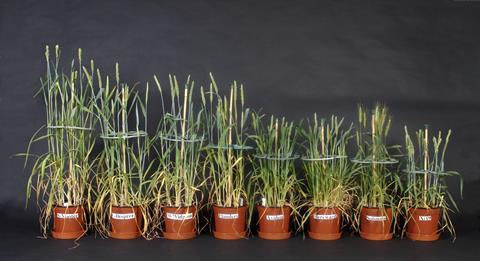
But for all its benefits, the Green Revolution seems to have had one unwanted consequence. Comparing Green Revolution wheat varieties with older varieties, McGrath and his colleagues found that modern varieties contained fewer minerals when grown under the same conditions and side by side with older varieties. This suggests that the decline in micronutrients is not due to environmental factors, but to something happening inside the plant.
‘It’s not a soil effect, it’s not a seasonal effect […] It’s the fact that the genetics changed, and the allocation of nutrients has changed,’ McGrath concludes. He explains that the plant is putting more of its carbohydrates, its production, into the grain and less into the straw. The increase in carbohydrates dilutes other grain components, including minerals. So although we see higher yields, the grains themselves are poorer in micronutrients: average concentrations of zinc, copper, iron and magnesium in the grain of the newer varieties were 19–28% lower than those of the older ones.
These results provide some answers to the question of whether the nutrient content of our food is changing, although they only look at one crop (wheat) in one country (England).
Other studies paint a more global picture. In 2020, a team analysed wheat samples from Rothamsted as well as samples from herbaria in 16 different countries. They found that, like in the British samples, wheat all over the world has undergone nutritional changes in recent decades. Carbohydrates have increased, while protein and mineral content have declined. Similar to what McGrath saw in 2008, these trends are linked to the introduction of higher-yielding varieties. But scientists also pointed to an environmental factor: a rise in atmospheric carbon dioxide.
More carbon, fewer nutrients
There’s no denying that the amount of carbon dioxide and other greenhouse gases in the atmosphere has been rising steadily for decades. And while hundreds of species will be adversely affected, some plants may actually thrive. ‘Plants evolved when carbon dioxide was much higher than today, so for about 90–95% of them, the current carbon dioxide concentration is less than optimal. More carbon dioxide stimulates photosynthesis and growth,’ says Lewis Ziska, professor of environmental health sciences at Columbia University in New York, US.
But bigger isn’t always better. And though growing more plants may mean more food, the amount of nutrients in that food may be far from ideal for human nutrition. In the early 2000s, mathematician Irakli Loladze published such a theory, arguing that rising atmospheric carbon dioxide levels should exacerbate ‘the already acute problem of micronutrient malnutrition’. But it took years before he had enough experimental data to show that rising carbon dixoide levels do indeed appear to deplete minerals in plants.
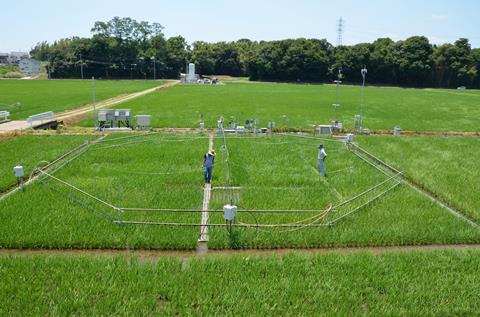
The tests Loladze looked at involve growing crops in two similar fields under the same conditions, except for one thing: the amount of carbon dioxide. To do this, scientists use Face (free-air carbon dioxide enrichment) platforms, which are ring-like structures in an open field that emit the gas directly above the crop. In 2018, a team of scientists that Ziska worked with tested whether carbon dioxide concentrations affected the nutrient content of rice plants at Face facilities in China and Japan. The team grew different rice varieties in ambient and carbon dioxide-enriched conditions and saw a 10% reduction in protein in the rice varieties with the most carbon dioxide. They also saw significant reductions in iron, zinc and vitamins B1, B2, B5 and B9, while vitamin E was increased.
‘For poor and marginalised populations that eat a lot of starch as the main component of their diet, having 10% less protein is going to have consequences,’ says Kristie Ebi, an expert in climate change and health at the University of Washington in Seattle, US.
But what could explain these findings? The researchers have a few ideas. The type of plants studied here seem to respond to increased carbon dioxide concentrations by producing more carbohydrates. And because there’s more carbon in the plant, there seems to be relatively less nitrogen-based compounds such as proteins and vitamins.
The field experiments show about a 5% reduction in micronutrients
‘The stimulation is for carbon (more carbon dioxide in the air), not for other nutrients in the soil, like calcium, phosphorus or nitrogen. There is an imbalance; plants are becoming carbon-rich, but nutrient-poor,’ says Ziska. ‘Secondary compounds, like the B vitamin complex, which require nitrogen, are declining; however other compounds like vitamin E (which has no nitrogen, it’s all carbon) are going up,’ he adds.
Another pathway that could explain the reduced rate of micronutrients relates to water efficiency. ‘When plants grow in this higher concentration of carbon dioxide, they’re more water efficient. So, they bring in less water, which means they bring in less micronutrients from the soil,’ adds Ebi.
Ebi joined Ziska in the 2018 study but she was more interested in understanding the impact that nutrient depletion, however small, could have on global health. ‘The field experiments show about a 5% reduction in micronutrients, which sounds pretty small. But there are 830 million people in the world who are food insecure. There are 2 billion with micronutrient deficiencies,’ she adds.
Impact on diets and health
Farmers around the world are still growing the modern wheat varieties studied at Rothamsted, which means they’re getting higher yields, but at the cost of lower nutritional value. Add to this an atmosphere that’s becoming increasingly rich in carbon dioxide, and food could continue to change in the future, with implications for all life on the planet. ‘Every animal on Earth relies on plants to live. If we change their composition – and the evidence is overwhelming that we are – then all life will be affected,’ Ziska says.
Most people don’t have the portions of fruit and vegetables that they should anyway
Fortified crops could be one way of tackling this problem in regions where people are more likely to be affected. Adapting the way we grow food is another. Ebi mentions that changing farmers’ rewards could be a step forward. ‘The incentive for farmers is how much they produce, not the quality of what they produce. And if you could change the incentives, our farmers could be rewarded for having higher nutrient density [crops],’ she says.
But in the grand scheme of things, does all this mean you need to boost your diet right away? Not really. The use of supplements may come to mind, and indeed supplement companies tend to exploit these findings to promote their products. However, it seems that the best approach is still to follow the usual dietary guidelines, especially at a time when fruit and vegetable consumption in European countries is still far from ideal.
‘Most people don’t have the portions of fruit and vegetables that they should. It’s not much more than 10% to have more than five portions across the EU. And we’re talking about a highly privileged continent, so that’s a problem in itself,’ Trigueiro says.
In the UK, vegetables make up a meagre 6.3% of the average shopping basket. Keeping an eye on how the nutritional content of food changes in a changing planet is important, but returning to typical dietary guidelines still seems to be a priority. So, eat your five a day – even if you don’t think they taste quite as good as they did in the good old days.
Bárbara Pinho is a science writer based in Porto, Portugal







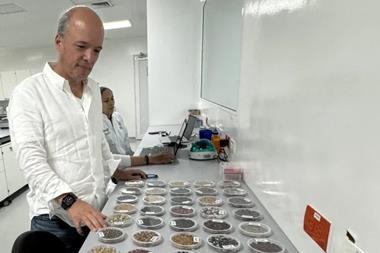
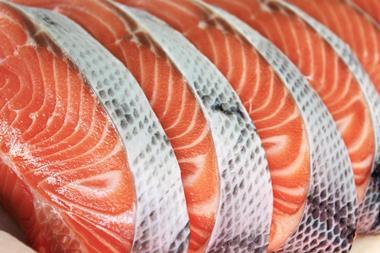
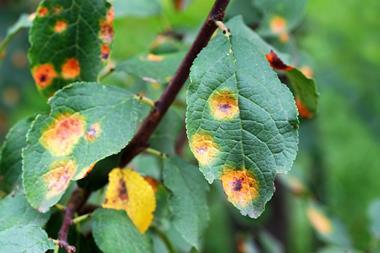
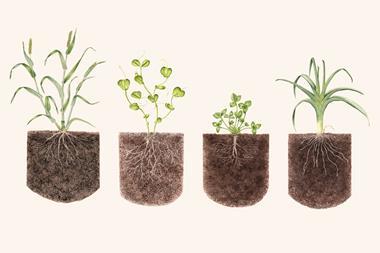







1 Reader's comment